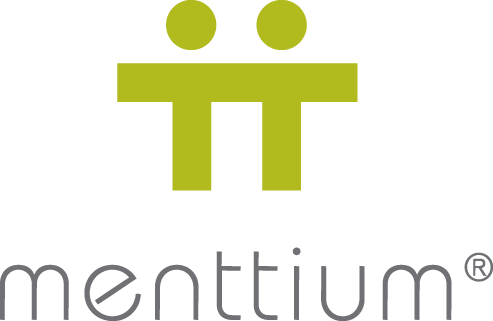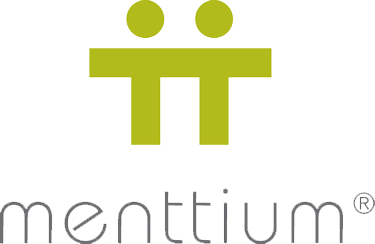14 Aug Career Development Strategies

Andrya Pearson, learning and talent development professional with over 20 years of experience at companies like Allstate Insurance, CVS Health, and Aetna Health, shares powerful career development strategies that can transform your professional trajectory. In this comprehensive guide, we’ll explore her proven methods for goal setting, executive presence, and overcoming imposter syndrome in today’s challenging work environment.
The Foundation: Strategic Goal Setting for Career Success
Setting effective goals forms the backbone of any successful career development strategy. According to Andrya, every organization has a mission, and your work needs to align with that mission to maximize impact and advancement opportunities.
Key Principles for Effective Goal Setting
- Align with organizational priorities: Your goals should directly support your company’s mission and strategic objectives
- Use the A-B-C prioritization system: Categorize tasks as must-do (A), should-do (B), or could-do (C) priorities
- Maintain open communication with leadership: When overwhelmed, present your current priorities and ask for guidance on reorganization
- Create partnership opportunities: Use capacity discussions to demonstrate your workload and seek collaborative solutions
This approach not only helps manage overwhelming workloads but also serves as authentic self-promotion, keeping your manager informed of your contributions and capabilities.
Mapping Your Career Path: From Where You Are to Where You Want to Be
Career mapping requires intentional planning and strategic thinking. Andrya emphasizes that most successful careers aren’t built on predefined paths but through deliberate choices and continuous assessment.
Essential Steps for Career Mapping
- Assess your current position: Identify what you enjoy and dislike about your current role
- Define your target destination: Research roles that offer more of what motivates you
- Create development plans: Establish short-term, mid-term, and long-term goals
- Communicate your aspirations: Share your career plans with leadership to gain support and visibility
- Consider lateral moves: Sometimes moving across functions provides necessary skills for upward mobility
Building Executive Presence in a Virtual World
Executive presence has become more challenging to develop in our increasingly virtual work environment, but it remains crucial for career advancement.
Defining Your Professional Brand
Your professional brand answers the question: “What do people think when you enter the room?” Andrya recommends reading “Be the Unicorn” to identify your standout qualities and leverage them effectively.
Strategies for Developing Executive Presence
- Study successful leaders: Observe how leaders two levels above you command attention and communicate effectively
- Do your due diligence: Prepare thoroughly for meetings by researching topics and reading relevant materials
- Google is your friend: Stay informed about industry trends and company developments
- Add value in every interaction: Even as the newest person in the room, bring insights from previous experiences or recent research
Conquering Imposter Syndrome: From Self-Doubt to Self-Confidence
Imposter syndrome affects virtually everyone, especially when entering new roles or environments. However, Andrya provides practical strategies for managing these feelings and building genuine confidence.
Practical Techniques for Overcoming Imposter Syndrome
Acknowledge the reality: Recognize that imposter syndrome is normal and affects everyone in new situations
Prepare thoroughly: Combat uncertainty through research and preparation
- Get meeting agendas in advance
- Study relevant topics and industry trends
- Prepare thoughtful questions and insights
Challenge negative self-talk: Replace limiting beliefs with empowering statements
- “I belong here and bring value to every room”
- “I may not know everything, but I’m good enough”
- “My questions and perspectives add value”
Find advocates and role models: Build relationships with people who can provide guidance and support
Celebrate small wins: Acknowledge when you contribute value, even through simple clarifying questions
Pre-Performance Routines for Confidence Building
Andrya suggests adopting techniques used by Olympic athletes and public speakers:
- Listen to motivational content before important meetings
- Develop a personal “pump-up” playlist
- Practice positive visualization
- Create consistent pre-meeting routines that boost confidence
Networking in the Virtual Age: Building Meaningful Professional Connections
Networking remains essential for career development, but it requires new approaches in our virtual-first world.
Virtual Networking Best Practices
Reframe networking as relationship building: Focus on genuine connections rather than transactional exchanges
Set specific goals: Challenge yourself to meet a certain number of new people at events (Andryan suggests five as a minimum)
Leverage technology effectively:
- Schedule 15-minute virtual coffee chats
- Connect on LinkedIn after meeting people
- Share photos and insights from professional events
- Follow up with new connections within 48 hours
Bring your authentic self: Approach networking as an opportunity to learn about others and share your own experiences
Lessons Learned: What Experience Teaches About Career Success
Reflecting on her career journey, Andrya emphasizes the importance of visibility and self-advocacy in professional advancement.
Critical Career Insights
Hard work alone isn’t enough: Excellence in execution must be combined with strategic visibility and relationship building.
Develop your brand early: Be intentional about how you want to be perceived professionally.
Seek mentorship throughout your career: Even experienced professionals benefit from trusted advisors who can provide perspective and guidance.
Take the pause: Before reacting to challenging situations, step back and consider your response carefully.
The Power of Continuous Learning
Andrya’s favorite philosophy centers on the Chinese proverb that knowledge is the one treasure that cannot be taken away from you. This mindset drives her commitment to learning something new each year and maintaining the beginner’s mindset that keeps her connected to the challenges her mentees face.
Conclusion: Implementing Your Career Development Strategy
The career development strategies shared by Andrya Pearson provide a comprehensive framework for professional growth in today’s complex work environment. By focusing on strategic goal setting, building executive presence, overcoming imposter syndrome, and maintaining strong professional networks, you can create a clear path toward your career aspirations.
Remember that career development is not a destination but a continuous journey of growth, learning, and strategic positioning. Start by implementing one or two of these strategies, and gradually build your professional development toolkit.
Whether you’re just starting your career or looking to make your next strategic move, these proven techniques can help you navigate challenges, build confidence, and achieve your professional goals. The key is to remain intentional, stay connected with others, and never stop investing in your own growth and development.
About Andrya Pearson
Andrya Pearson is a learning and talent development professional with over 20 years of experience at Fortune 500 companies including Allstate Insurance, CVS Health, and Aetna Health. She specializes in unlocking human potential and delivering measurable organizational outcomes.
As proprietor of Mentoring Wise, Andrya assists clients in navigating corporate landscapes and maximizing their potential. She has mentored five professionals through Menttium, created an ERG mentor program at Allstate, and currently serves on the board of the Boys and Girls Club of Lake County, Illinois.


